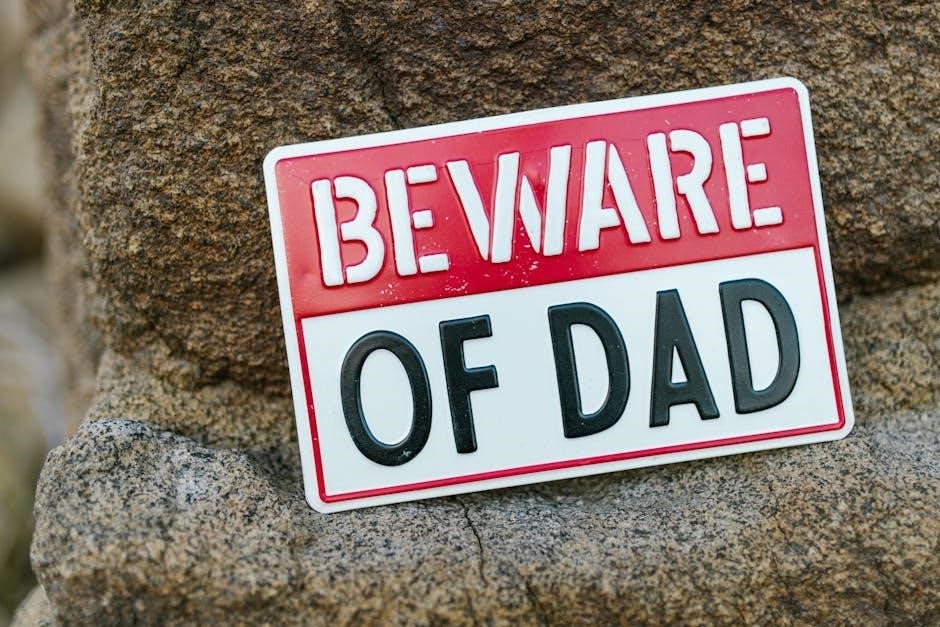Batman: The Killing Joke is a 1988 DC Comics graphic novel by Alan Moore and Brian Bolland‚ exploring the Joker’s origin and his twisted relationship with Batman․ Available as a PDF‚ it remains a seminal work in comic literature‚ blending psychological depth with haunting visuals․

1․1 Background and Publication History
Batman: The Killing Joke‚ written by Alan Moore and illustrated by Brian Bolland‚ was published in 1988 by DC Comics as a one-shot graphic novel․ Originally released in print‚ it has since been widely distributed as a PDF‚ ensuring its accessibility to modern readers․ The story draws inspiration from the 1951 comic The Man Behind the Red Hood‚ which introduced the Joker’s early concept․ This graphic novel is celebrated for its dark‚ thought-provoking narrative and iconic artwork‚ solidifying its place as a classic in the Batman canon․ Its exploration of morality‚ madness‚ and the Joker’s tragic origins has left a lasting impact on comic book culture․
1․2 The Joker’s Origin Story
In The Killing Joke‚ Alan Moore crafts a tragic backstory for the Joker‚ portraying him as Jack Napier‚ a failing comedian driven to madness․ The PDF version details his transformation after a brutal accident involving a vat of chemicals‚ which bleaches his skin and disfigures his face․ This origin story humanizes the Joker‚ emphasizing how a single bad day could push anyone to insanity․ Moore’s narrative explores the Joker’s belief that anyone can become as mad as he is‚ underlining the thin line between sanity and insanity․ This story has become one of the most widely recognized origins for the character‚ adding depth to his chaotic persona․

Themes and Moral Questions in “The Killing Joke”
The Killing Joke explores morality‚ sanity‚ and redemption‚ questioning the line between heroism and villainy․ The Joker’s actions challenge Batmans belief in justice‚ provoking deep ethical reflection․ Available as a PDF‚ this graphic novel delves into these themes‚ leaving readers to ponder the nature of morality and madness․
2․1 Morality and Justice
In The Killing Joke‚ the Joker’s chaotic actions challenge Batman’s unwavering moral code‚ raising profound questions about justice and morality․ The Joker believes that morality is relative‚ and he seeks to prove that even the most upright individuals can descend into madness with one bad day․ Batman‚ however‚ steadfastly upholds his commitment to justice‚ refusing to kill even his arch-nemesis․ This clash of perspectives highlights the moral ambiguity of their conflict․ The graphic novel‚ available as a PDF‚ explores these themes through its dark narrative‚ forcing readers to confront the ethical dilemmas inherent in heroism and villainy․ The story’s exploration of morality and justice remains a cornerstone of its enduring appeal․
2․2 Sanity vs․ Insanity
The Killing Joke delves deeply into the theme of sanity vs․ insanity‚ with the Joker embodying chaos and madness while Batman represents order and rationality․ The Joker’s belief that “one bad day” can drive anyone to insanity challenges Batman’s unwavering commitment to justice․ Through the Joker’s origin story‚ the graphic novel explores how a tragic series of events can shatter a man’s sanity‚ transforming him into a villain․ Meanwhile‚ Batman’s refusal to kill‚ even in the face of extreme provocation‚ underscores his grip on sanity․ The PDF format of the novel allows readers to visually grasp the stark contrast between these two extremes‚ further emphasizing the blurred line between sanity and insanity in their eternal conflict․ This duality is central to the story’s psychological depth and enduring impact․

2․3 The Concept of Redemption
The Killing Joke examines the concept of redemption through Batman’s unwavering belief in the possibility of saving even the Joker․ Despite the Joker’s heinous crimes‚ Batman offers him a chance to escape his madness‚ symbolizing his commitment to justice over vengeance․ The Joker’s rejection of this offer highlights the complexity of redemption‚ suggesting that some individuals may be beyond salvation․ This moral dilemma is central to the story’s exploration of human nature․ The PDF version of the novel vividly illustrates this thematic conflict‚ leaving readers to ponder whether redemption is achievable or merely an illusion in the face of profound evil․

Character Analysis
Batman: The Killing Joke delves into the psychological depths of Batman and the Joker‚ exploring their moral complexities and intertwined fates․ The PDF highlights their contrasting ideologies‚ with Batman representing order and the Joker embodying chaos‚ creating a gripping dynamic that defines their legendary rivalry․
3․1 Batman’s Dilemma
In The Killing Joke PDF‚ Batman faces a profound moral dilemma as he confronts the Joker’s twisted philosophy․ The story challenges his unwavering belief in justice‚ forcing him to question whether even the most corrupt can be redeemed․ Batman’s struggle is intensified by the Joker’s brutal attack on Barbara Gordon‚ which tests his resolve and pushes him to confront his own limitations․ Moore’s narrative masterfully portrays Batman’s internal conflict‚ highlighting his determination to uphold justice while grappling with the ethical implications of his actions․ This internal strife makes Batman a more complex and relatable character in the PDF version․
3․2 The Joker’s Complexity
The Joker’s complexity in The Killing Joke PDF is deeply explored through his tragic origin story and chaotic philosophy․ Moore portrays him as both a victim of circumstance and a master of anarchy‚ blurring the line between villainy and tragedy․ His belief that “one bad day” can drive anyone to madness underscores his twisted worldview․ The Joker’s actions are not merely evil but a misguided attempt to prove his philosophy‚ adding layers to his character․ His chaotic nature contrasts sharply with Batman’s order‚ creating a duality that defines their relationship․ This complexity makes the Joker one of comics’ most compelling and haunting characters in the PDF version․

Plot Summary
The Killing Joke PDF follows the Joker’s escape and his twisted plan to drive Commissioner Gordon mad by crippling Barbara Gordon‚ leading to a climactic‚ morally ambiguous showdown with Batman․
4․1 The Joker’s Escape and Plan
The Joker orchestrates a meticulous escape from Arkham Asylum‚ setting the stage for a sinister plan to prove that even the most virtuous can be driven to madness․ In the Killing Joke PDF‚ he targets Commissioner James Gordon‚ aiming to break his spirit by crippling his daughter‚ Barbara Gordon․ This act is central to his twisted scheme‚ showcasing his belief that a single bad day can unravel sanity․ The Joker’s plan unfolds with calculated chaos‚ blending violence and psychological warfare‚ while Batman races to intervene‚ leading to a confrontation that challenges their intertwined fates and moral boundaries․
4․2 The Tragic Event Involving Barbara Gordon
The Joker’s plan reaches a devastating climax as he orchestrates a brutal attack on Barbara Gordon‚ Commissioner James Gordon’s daughter and the hero known as Batgirl․ In the Killing Joke PDF‚ the Joker shoots Barbara‚ leaving her paralyzed and emotionally scarred․ This act is a pivotal moment in the story‚ showcasing the Joker’s ruthless disregard for human life and his desire to inflict suffering․ The event also deeply affects Batman‚ as he grapples with the consequences of his ongoing battle with the Joker․ Barbara’s injury becomes a defining moment in her character’s evolution‚ as she later embraces her new identity as Oracle‚ continuing her fight for justice in a different capacity․
The Relationship Between Batman and the Joker
In The Killing Joke‚ Batman and the Joker are arch-nemesis‚ embodying order and chaos․ The Joker sees Batman as his perfect adversary‚ intertwining their fates․
5․1 Their Intertwined Fates
The relationship between Batman and the Joker in The Killing Joke is deeply intertwined‚ with each representing opposing forces of order and chaos․ The Joker views Batman as his ultimate adversary‚ believing their conflict is inevitable and eternal․ Batman‚ driven by justice‚ sees the Joker as a tragic figure who could have been saved․ Their fates are sealed as they dance around the thin line between heroism and villainy‚ each pushing the other to extremes․ This dynamic is central to the story‚ highlighting the idea that one cannot exist without the other․
5․2 The Thin Line Between Hero and Villain
In The Killing Joke‚ the distinction between hero and villain is blurred‚ suggesting that the difference may be just one bad day․ The Joker believes that anyone can become like him‚ given the right circumstances․ Batman‚ while resolute in his morals‚ is pushed to his limits‚ revealing vulnerabilities that humanize him․ This theme challenges readers to question whether heroism is inherent or a choice‚ and whether villainy is a product of circumstance․ The story underscores the fragility of morality and the ease with which it can be shattered‚ leaving a lasting impact on the reader․
The Controversial Ending
The ending of The Killing Joke is famously ambiguous‚ leaving readers to ponder the fates of Batman and the Joker․ The Joker’s laugh with Batman suggests a haunting camaraderie‚ raising moral questions about their intertwined lives․
6․1 Ambiguity and Interpretation
The ending of The Killing Joke is shrouded in ambiguity‚ leaving readers to interpret the fate of Batman and the Joker․ The final scene‚ where both share a laugh‚ suggests a dark harmony between them‚ blurring the line between hero and villain․ Many interpret this as a acknowledgment of their eternal cycle of conflict‚ while others speculate about the Joker’s possible death․ The lack of a definitive conclusion allows readers to reflect on the moral complexities and the nature of their relationship‚ making the ending a subject of enduring debate and analysis․
6․2 Moral Implications of the Conclusion
The ending of The Killing Joke raises profound moral questions‚ particularly regarding Batman’s decision not to kill the Joker despite his heinous actions․ This choice underscores Batman’s unwavering commitment to justice over vengeance‚ reinforcing his moral code․ However‚ the Joker’s brutal assault on Barbara Gordon and his attempt to break Commissioner Gordon challenge the ethics of Batman’s approach․ The story forces readers to confront the limits of morality in a world where evil seems irredeemable․ The conclusion also leaves lingering doubts about whether the Joker can ever truly be redeemed‚ further complicating the ethical landscape of Gotham City and its iconic characters․

Art and Illustration
Brian Bolland’s illustrations in The Killing Joke are renowned for their haunting‚ moody artistry․ His use of muted tones and atmospheric shading enhances the story’s dark‚ gritty tone․ The Joker’s visual appeal is heightened‚ capturing his maniacal charm and depth․
7․1 Brian Bolland’s Contribution to the Graphic Novel
Brian Bolland’s illustrations in The Killing Joke are iconic‚ bringing Alan Moore’s story to life with haunting precision․ His detailed‚ atmospheric art captures the psychological depth of the characters‚ particularly the Joker’s maniacal charm and Batman’s brooding intensity․ Bolland’s use of muted tones and dramatic shading enhances the novel’s dark‚ gritty tone․ The cover art‚ featuring Batman and the Joker‚ has become a symbol of the graphic novel’s enduring legacy․ Bolland’s work not only complements Moore’s narrative but elevates it‚ making The Killing Joke a visually unforgettable experience․ His contribution remains a cornerstone of the graphic novel’s acclaim and influence․

Impact and Legacy
The Killing Joke has left an indelible mark on Batman lore‚ influencing numerous adaptations and redefining the Joker’s character․ Its exploration of morality and madness remains culturally significant․
8․1 Cultural Significance of “The Killing Joke”
The Killing Joke is a cornerstone of comic book culture‚ influencing countless adaptations and reinterpretations․ Its deep exploration of themes like morality‚ madness‚ and redemption has resonated widely‚ making it a timeless classic․ The graphic novel’s dark and thought-provoking narrative has not only shaped the Joker’s character but also redefined the Batman mythos․ Available as a PDF‚ it continues to attract new readers‚ solidifying its place as a must-read for fans of graphic novels and superhero literature․ Its legacy endures‚ inspiring both creators and audiences with its haunting and profound storytelling․
8․2 Influence on Other Batman Stories and Adaptations
The Killing Joke has profoundly influenced Batman storytelling across media․ Its portrayal of the Joker’s origin and the tragic event involving Barbara Gordon has shaped modern comics‚ films‚ and TV shows․ The graphic novel’s dark tone and moral complexity inspired works like Christopher Nolan’s The Dark Knight‚ where Heath Ledger’s Joker mirrored the comic’s chaotic brilliance․ Additionally‚ the story’s impact on Barbara Gordon’s character led to her evolution into Oracle in subsequent narratives․ The PDF version of The Killing Joke remains a key reference for creators‚ ensuring its ideas continue to resonate in new adaptations‚ solidifying its legacy as a defining Batman story․

FAQs About “The Killing Joke”
Frequently asked questions about The Killing Joke include inquiries about its plot‚ characters‚ and availability as a PDF․ Readers often seek insights into its significance in Batman lore and its enduring popularity․
9․1 Common Questions and Misconceptions
Common questions about The Killing Joke often revolve around its availability as a PDF‚ its faithfulness to the original graphic novel‚ and its themes․ Misconceptions include the belief that the PDF lacks the original artwork’s quality or that it is illegal to download․ However‚ official digital versions are readily available through platforms like DC Comics and Comixology‚ ensuring high-quality reproduction of Brian Bolland’s iconic illustrations․ Another misconception is that the story is solely about the Joker’s origin‚ when it also explores deep moral and psychological themes․ The PDF format has made this classic more accessible‚ introducing it to new generations of readers while preserving its timeless appeal․

Final Thoughts
Batman: The Killing Joke is a masterpiece exploring heroism‚ villainy‚ and morality․ Its dark themes and complex characters leave a lasting impact‚ making it a timeless classic accessible as a PDF․
10․1 The Timeless Appeal of “The Killing Joke”
Batman: The Killing Joke remains a timeless classic due to its deep exploration of morality and madness․ The graphic novel‚ available as a PDF‚ masterfully delves into the psychological battle between Batman and the Joker‚ offering insights into their intertwined fates․ Alan Moore’s narrative‚ combined with Brian Bolland’s striking visuals‚ creates a story that transcends generations․ The PDF format ensures accessibility‚ allowing readers to engage with this iconic tale․ Its themes of justice‚ chaos‚ and redemption continue to resonate‚ solidifying its place as a cornerstone of comic literature․ The PDF version preserves the original’s haunting artistry and philosophical depth‚ ensuring its enduring appeal․
10․2 Ethical and Philosophical Questions Raised by the Story
Batman: The Killing Joke challenges readers with profound ethical dilemmas‚ questioning the nature of morality‚ justice‚ and redemption․ The Joker’s belief that “one bad day” can drive anyone to madness raises questions about the fragility of sanity and morality․ Batman’s refusal to kill‚ even when faced with unimaginable evil‚ contrasts sharply with the Joker’s chaotic worldview․ The story also explores the concept of free will versus determinism‚ asking whether individuals are shaped by their experiences or choose their paths․ The novel’s ambiguous ending further complicates these themes‚ leaving readers to ponder whether redemption is possible or if some individuals are beyond salvation․ These ethical and philosophical questions ensure the story’s lasting relevance and depth in the PDF format‚ inviting readers to reflect on their own moral frameworks and the complexities of human nature․ The exploration of these themes solidifies The Killing Joke as a thought-provoking masterpiece that transcends traditional comic book narratives‚ offering insights into the darker aspects of humanity while challenging readers to confront their own values and beliefs․ The graphic novel’s ability to provoke such deep reflection is a testament to its enduring impact on both fans and scholars‚ making it a seminal work in the exploration of ethical and philosophical questions within the medium of graphic storytelling․